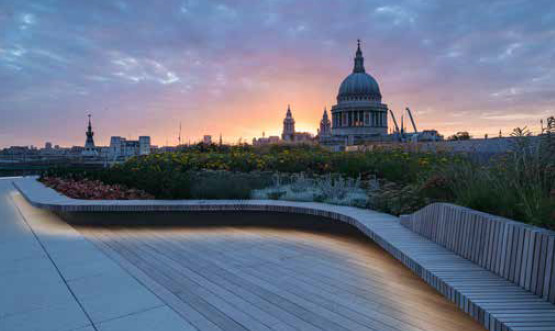Insights
Circularity in urban lighting: Part 1.
How can a lifecycle approach to lighting reduce carbon emissions?
Original article published in Urban Design Journal.
It is estimated that lighting accounts for 5 per cent of global carbon emissions, but this figure only considers the energy used, not the impact of materials extraction, recycling, manufacturing and installation. The true figure is even greater. Lighting equipment typically has a service life of 15-20 years, but its on-site time is rarely beyond 10 years, with some installations lasting only 5 years. The impact of innovative technologies can drive short product lifecycles with promised cost savings and payback periods influencing decisions to swap old LED or old control systems for new.
All lighting equipment that is decommissioned is supposed to be recycled under the WEEE Directive (Waste from Electrical and Electronic Equipment), but much of the waste is not recycled correctly. In fact, in interior lighting, it is estimated that only 7 per cent is recycled appropriately; the rest may be disassembled for valuable raw materials but not sent for full processing as it should be.
The impact of this is that for every lighting product specified, we are condemning a proportion of its materials to landfill or out of the recovery cycle. Those materials are therefore lost. And it is not just raw materials like steel and aluminium, which make up most of the materials in an external product, but precious resources like copper, tin, gold, zinc and glass. There are also rare earth minerals or rare earth elements (REEs), often mined in challenging circumstances, such as Yttrium used in white LED phosphors.
Infinite resources and light
The dual impact of the climate emergency and an increased awareness of the impacts of lighting on wellbeing, biodiversity and ecology is driving a change in the lighting industry. There have been some amazing steps forward in the guidance available with CIBSE TM66 Creating a circular economy in the lighting industry, and TM65.2 Embodied carbon in building services: lighting, and the adoption of life cycle analysis (Environment Product Declarations or EPD) by many manufacturers. In the case of EPDs and TM65.2, these tools allow us to not only measure the embodied carbon of the products we select but also compare this to other products to make better choices about the solutions provided.
TM66 is one of the only tools available in the lighting and wider engineering industry to assess a product’s circularity. TM66 provides a points-based scoring system called CEAM (Circular Economy Assessment Method) based on the sustainable and material decisions that one makes when designing a product.
A product that scores highly in TM66 will use recycled materials and be designed for refurbishment, recyclability and longevity. A recent product example is Mini G-CAT by Stoane Lighting, an external catenary luminaire for which the aluminium components contain 70 per cent recycled aluminium. Due to the specific technical requirements of the optic, it is currently made from virgin acrylic; however, the manufacturers are working to find a replacement process which uses a larger extrusion made from a recycled monomer. Waste from manufacturing operations on aluminium components is collected and recycled in-house at their warehouse, and powder waste from the spray-painting process is also collected and added to an acrylic mix to create unique pendant products. In addition, they provide detailed exploded diagrams so that replacement parts can be found and ordered with ease, prolonging the life of the product. The product achieves an Excellent Circularity score in the CEAM (TM66) metric.
To some extent, these tools have functioned as disruptors in the lighting industry and prompted specifiers to question the products they select. Now for many people,
The first question is not which lights to specify, but can we refurbish and remanufacture existing lighting to minimise the impact of resources being wasted?

For a recent project in London, our lighting design team looked at refurbishing existing lights instead of their replacement. The lights were installed in 2005 and were approaching the end of their service life. Working alongside Louis Poulsen Lighting we found that replacing old technology with new LED technology would halve the energy consumption. Refurbishing instead of replacing lights would save about 500kg CO2e, whilst keeping the raw materials in the use cycle. We were able to calculate this because Louis Poulsen had carried out a detailed lifecycle analysis and provided CO2e values per product.
On just a small project, a notable impact could be made with more considerate decisions. Scaled up, the savings in carbon would be far greater. If we are to see greater success in our industry, we really need to build on the excellent work of TM66 and consider two main things:
— The true circular economy
— Who are we lighting for.
Be sure to read part two which will look at the true circular economy and who we are lighting for.